Buying a phone with a good camera won't make you a professional photographer. However, you will be able to capture in every detail the moments that are dear to your heart. Or take a beautiful selfie that you are not ashamed to post on Instagram.
By examining the smartphone models whose cameras have scored the highest DxOMark ratings, we have created the top 10 best camera phones of 2018.
Our picks of the best smartphones of 2018:
Brand country: European (A-class); Chinese; with Aliexpress.
Brand: Samsung; Xiaomi; Sony; Huawei.
Price segment, rubles: up to 5000; up to 10000; up to 15000; up to 20,000; up to 25000; up to 30,000.
Availability: inexpensive; most expensive.
Characteristics: push-button; the best camera; camera + battery; protected.
Trends: new items of the year; the most anticipated.
10. Apple iPhone 8
The average price is 51,600 rubles.
DxOMark score - 92
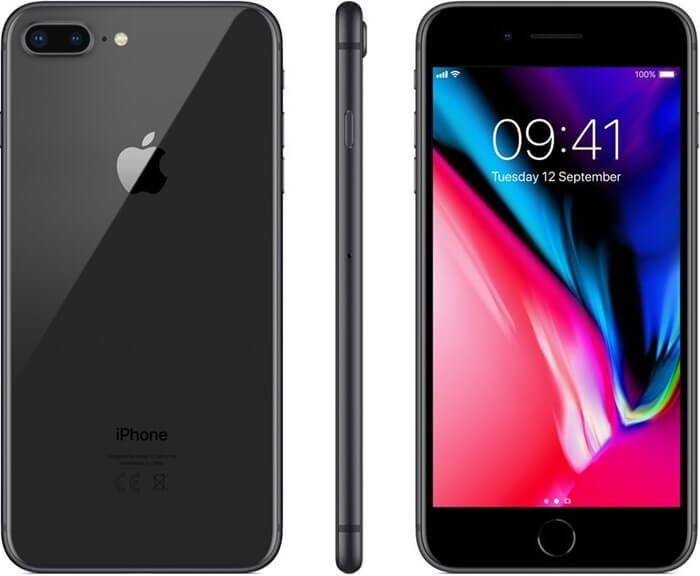 Among the giants from Samsung, Xiaomi and Huawei, the 4.7-inch Cupertino G8 looks small. But it fits into your pocket without any problems and fits comfortably in your hand. Inside it is the top-end "apple" chip A11 Bionic, from 64 to 256 GB of memory for user data and a 1821 mAh battery.
Among the giants from Samsung, Xiaomi and Huawei, the 4.7-inch Cupertino G8 looks small. But it fits into your pocket without any problems and fits comfortably in your hand. Inside it is the top-end "apple" chip A11 Bionic, from 64 to 256 GB of memory for user data and a 1821 mAh battery.
Unlike the Plus version, the iPhone 8 has a single 12MP main camera. It has an f / 1.8 aperture, 5x digital zoom, optical image stabilization and support for Live Photos. But all this was in the iPhone 7. The key difference from the previous model is that the iPhone 8 can now shoot 4K video at 60 frames per second, and also does slow mo recording at 240 frames per second in 1080p mode (Full HD), not just 720p.
Pros:
- Convenient size.
- There is NFC.
- There is fast and wireless charging.
- The camera takes photos of excellent quality even in low light.
- The case is waterproof.
- Very loud stereo speakers.
Minuses:
- Memory card cannot be inserted.
- The glass is not easily scratched, it is better not to carry the phone without a case.
9.Samsung Galaxy Note 8
The average cost is 56,990 rubles.
DxOMark rating - 94
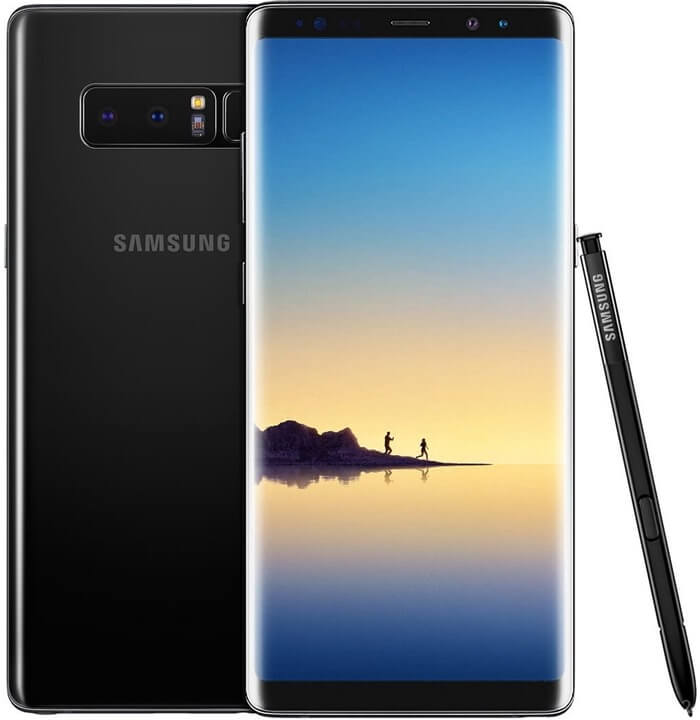 Everything is great in this phone: a borderless 6.3-inch AMOLED display, a huge amount of RAM in 6 GB, and from 64 to 256 GB of internal storage, one of the best Snapdragon 835 processors at the moment (or Exynos 8898M - depending on the region).
Everything is great in this phone: a borderless 6.3-inch AMOLED display, a huge amount of RAM in 6 GB, and from 64 to 256 GB of internal storage, one of the best Snapdragon 835 processors at the moment (or Exynos 8898M - depending on the region).
However, what sets the Galaxy Note 8 apart from the competition is the 12MP dual camera with OIS and 2x Optical Zoom. It takes detailed, colorful photos, has a bokeh (background blur) effect, and has an easy-to-use yet fully functional application. The Galaxy Note 8 has no shortage of Photo modes: Auto, Pro, Panorama and Food, and the missing modes can be downloaded from the Galaxy app store. There's also a new Full View camera option that matches the dimensions of Snapchat and Instagram Stories.
Pros:
- Futuristic bezel-less design.
- One of the best screens in terms of brightness and color rendition on the mobile market.
- It is possible to add memory.
- There is NFC.
- There is fast and wireless charging.
- There is a stylus.
Minuses:
- Combined slot for nanoSIM and microSD.
8. Apple iPhone 8 Plus
Cost - 67 900 rubles
DxOMark rating - 94
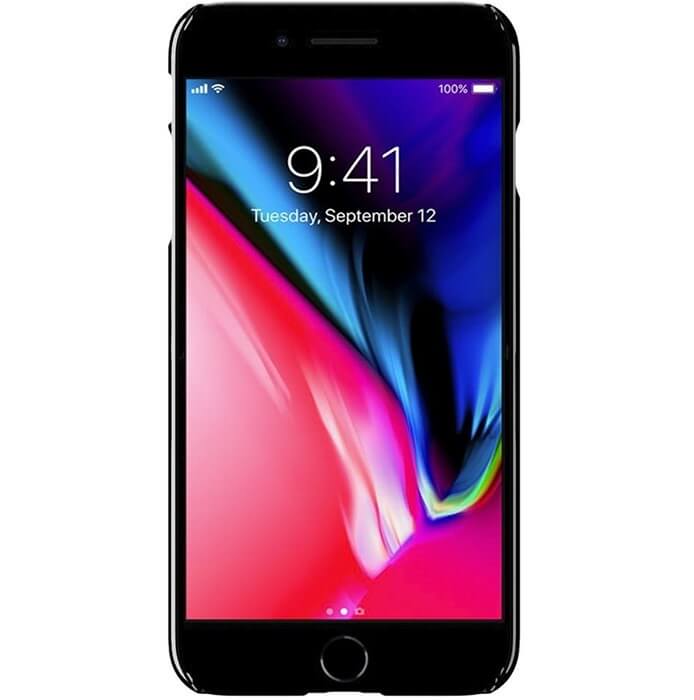 Compared to the tenth number in the smartphone camera rating of 2018 by DxOMark, the "plus" model is 54 grams heavier, has got a 5.5-inch screen and a dual 12/12 MP camera with a wide-angle and telephoto lens.The camera's autofocus is very fast, and you can shoot at 4K resolution at 60 frames per second.
Compared to the tenth number in the smartphone camera rating of 2018 by DxOMark, the "plus" model is 54 grams heavier, has got a 5.5-inch screen and a dual 12/12 MP camera with a wide-angle and telephoto lens.The camera's autofocus is very fast, and you can shoot at 4K resolution at 60 frames per second.
Overall camera performance is an evolution from previous iPhone lenses. And sharpness in mixed conditions is impressive - you can see a lot of detail in both brighter and darker areas of the photo.
Overall, the iPhone 8 Plus tends to overexpose every photo, making the image brighter than the subject or scene in real life.
Pros:
- Large screen with excellent color reproduction.
- Dual main cameras that capture bright and clear photos in any lighting condition.
- There is NFC.
- Very fast A11 Bionic processor.
- There is wireless and fast charging.
Minuses:
- Memory card cannot be inserted.
- The battery lasts for a day of use with an average load.
- Heavy and slippery body.
7. Xiaomi Mi MIX 2S
The estimated price in Russia is 32,000 rubles.
DxOMark score - 97
 At the end of March 2018, the presentation of the new 5.99-inch frameless frame from Xiaomi took place. The new Chinese phone with a good camera will receive the latest Qualcomm Snapdragon 845 processor, 6/64 GB, 6/128 GB or 8/256 GB of memory, as well as a 3400 mAh battery.
At the end of March 2018, the presentation of the new 5.99-inch frameless frame from Xiaomi took place. The new Chinese phone with a good camera will receive the latest Qualcomm Snapdragon 845 processor, 6/64 GB, 6/128 GB or 8/256 GB of memory, as well as a 3400 mAh battery.
Mi MIX 2S has a rear dual 12MP camera with Sony IMX363 sensor, 4-axis OIS, phase detection autofocus and 2x optical zoom.
In addition, the camera uses artificial intelligence to automatically adjust to shooting conditions and blur the background in portrait photos.
Pros:
- There is fast charging.
- There is a slot for a memory card.
- The top model will be "enclosed" in an elegant ceramic case. Regular versions will receive a glass back cover.
- Possibility of user identification by face.
- This is the cheapest smartphone with a good camera in our top 10.
- There is NFC.
Minuses:
- Most likely, like Mi Mix 2 - one of best chinese smartphones, his "big brother" will be very slippery. And all its beauty will be hidden in the case.
6. Huawei Mate 10 Pro
It is offered for 44,890 rubles.
DxOMark score - 97
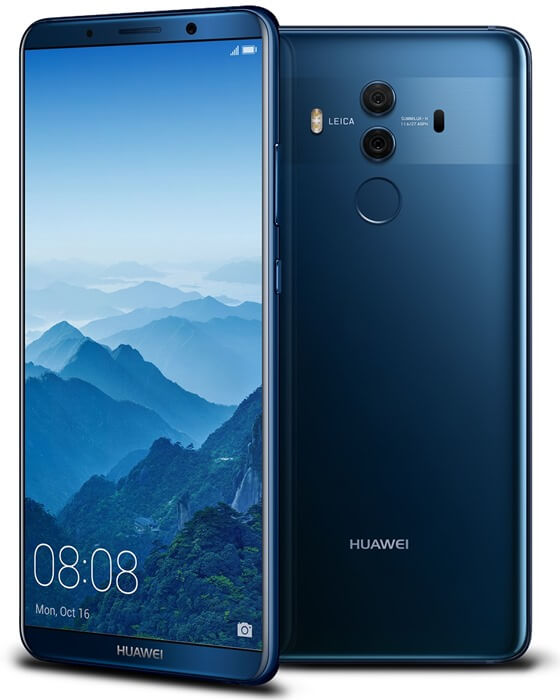 Few Chinese smartphones compare in design and performance to this luxurious glass and metal gadget with a six-inch OLED screen and an aspect ratio of 18: 9. A nimble HiSilicon Kirin 970 processor, 6GB of RAM and 128GB of flash memory allow the Mate 10 Pro to pull heavy apps and games at maximum settings. And the 4000 mAh battery will last a day and a half under full load.
Few Chinese smartphones compare in design and performance to this luxurious glass and metal gadget with a six-inch OLED screen and an aspect ratio of 18: 9. A nimble HiSilicon Kirin 970 processor, 6GB of RAM and 128GB of flash memory allow the Mate 10 Pro to pull heavy apps and games at maximum settings. And the 4000 mAh battery will last a day and a half under full load.
There are two camera modules on the back of the Mate 10 Pro: a 12-megapixel color sensor with OIS, and a 20-megapixel black and white sensor. Both cameras have an f / 1.6 aperture. This solves the problem with poor image quality in low light.
The phone also supports the new AI zoom (Intelligent Digital Zoom) function, and can evaluate a subject in the field of the video finder to set the optimal shooting parameters.
Pros:
- A huge screen with rich colors and automatic brightness control.
- Clear and loud sound from stereo speakers.
- There is NFC.
- Instant fingerprint sensor.
- There is fast charging.
Minuses:
- Memory card cannot be inserted.
- There is no 3.5 connector.
5. Apple iPhone X
The average cost in the maximum configuration is 70,400 rubles.
DxOMark score - 97
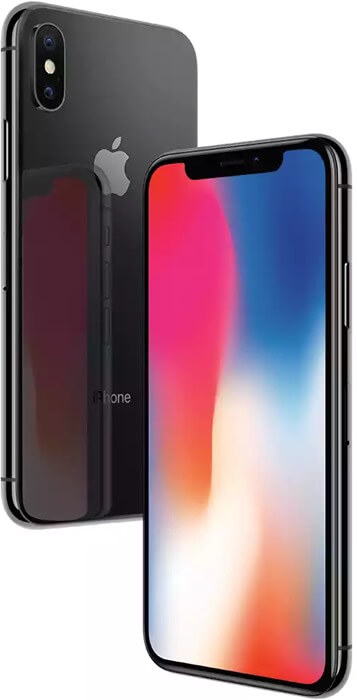 The 5.8-inch bezel-less smartphone was the most anticipated new product of 2017 from Apple. Losing the Home button and redesigning it was dangerous but also necessary after years of similarity across most iPhones. The result is a powerful and elegant device with a fast six-core A11 Bionic processor, 256 or 64 GB of built-in storage and the ability to identify by face.
The 5.8-inch bezel-less smartphone was the most anticipated new product of 2017 from Apple. Losing the Home button and redesigning it was dangerous but also necessary after years of similarity across most iPhones. The result is a powerful and elegant device with a fast six-core A11 Bionic processor, 256 or 64 GB of built-in storage and the ability to identify by face.
The pride of the iPhone X is the dual 12/12 MP rear camera. It has an f / 1.8 aperture and can take pictures with natural color reproduction and minimal noise.
IPhone X uses a wide-angle lens and digital zoom to improve low-light performance. Therefore, the image taken in the dark will not appear dull and blurry.
"Standard" iPhone photos automatically have a good level of blur.
The 7MP TrueDepth front camera takes very bright and clear selfies.Not only does she know how to blur the background, you can also use the Portrait options to change the lighting in the scene, or even cut yourself out of the image and place your image on a black background.
Pros:
- Top performance.
- Great cameras.
- Convenient interface.
- Juicy and bright screen.
- There is NFC.
- Convenient Face ID option.
Minuses:
- Memory card cannot be inserted.
- The case is slippery and heavy.
4. Google Pixel 2
Can be purchased for 45,380 rubles.
DxOMark score - 98
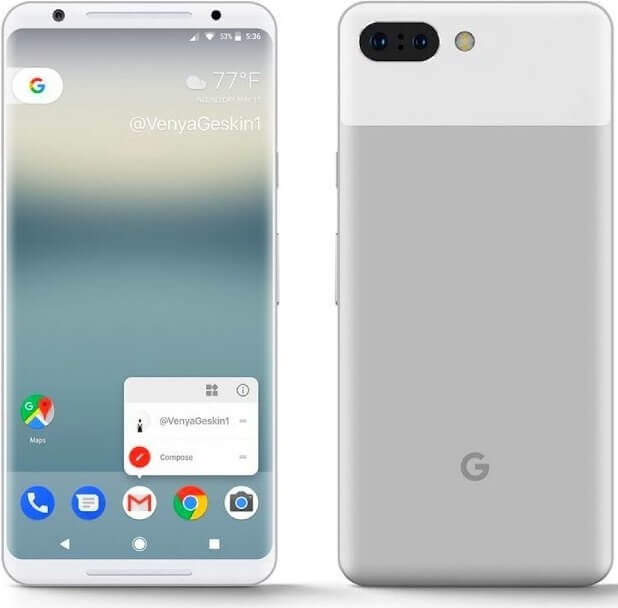 The Google Pixel 2 is a clear example of how two rear cameras aren't always better than one. This small 5-inch phone also features an extremely convenient way to call the Google Assistant. Just squeeze the sides of the phone. It's much easier than accidentally pressing another button (Bixby) on the Samsung Galaxy S9 Plus.
The Google Pixel 2 is a clear example of how two rear cameras aren't always better than one. This small 5-inch phone also features an extremely convenient way to call the Google Assistant. Just squeeze the sides of the phone. It's much easier than accidentally pressing another button (Bixby) on the Samsung Galaxy S9 Plus.
The latest games can easily go to Pixel 2 thanks to the Qualcomm Snapdragon 835 processor, 4GB of RAM and 64GB to 128GB of storage for user data.
The 12.2MP rear camera with f / 1.8 aperture is the best part of the Pixel 2. The color reproduction is lifelike and the photos look vivid. Even photos taken in low light with the Pixel 2 look like we've turned on the lights.
Both the 8MP front and rear cameras have a portrait blur background mode. This phone also has optical image stabilization and very fast laser autofocus.
Pros:
- Fits comfortably in the palm of your hand.
- Has an NFC chip.
- Has a waterproof class IP67.
- Holds a charge for a long time, despite the seemingly modest battery capacity - 2700 mAh.
- Excellent stereo speakers.
Minuses:
- Memory card cannot be inserted.
3. Samsung Galaxy S9 Plus
You can buy it for 54,000 rubles.
DxOMark rating - 99
 It is one of the largest Android phones ever, thanks to its 6.2-inch bezel-less screen. It looks a lot like last year's S8 Plus, but the updated model has relocated the fingerprint sensor (it's now centered on the back) and added stereo speakers.
It is one of the largest Android phones ever, thanks to its 6.2-inch bezel-less screen. It looks a lot like last year's S8 Plus, but the updated model has relocated the fingerprint sensor (it's now centered on the back) and added stereo speakers.
The powerful Exynos 9810 chipset, impressive RAM size (6 GB) and from 64 to 256 GB of internal memory will allow the smartphone to be used for several years when other flagships are already outdated.
The Galaxy S9 Plus (as well as the S9) has an excellent dual 12 / 12MP camera with f / 2.4 aperture that is automatically applied in bright light and expands to f / 1.5 in the dark. This is the world's first mobile phone with such a wide aperture. Thanks to this, a photo taken in low light will be extremely detailed and bright.
The main camera of the device can capture super-slow-motion video at 960 frames per second. And the 8MP front camera can be used to turn your face into an animated face with AR Emoji.
Pros:
- There is a slot for expanding memory.
- You can make contactless payments.
- Battery 3500 mAh.
- Fantastically beautiful appearance.
- The widest main camera aperture in the ranking of smartphones with the best camera of 2018.
- There is both wireless and fast charging.
- There is a face unlock.
Minuses:
- Fingerprints are clearly visible on the rear glass.
- AR Emoji is an over-hyped feature, few features.
2. Huawei P20
The estimated cost is 46 thousand rubles.
DxOMark rating - 102
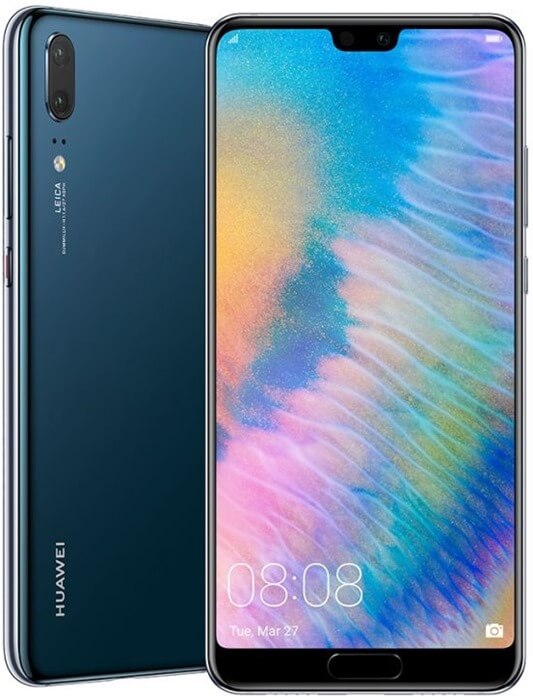 Upgrades for the P20 over last year's Huawei P10 include a glass back, new body colors, a powerful eight-core Kirin 970 processor, and a larger 5.8-inch screen size versus the Huawei P10's 5.1. In addition, the P20 has 128GB of flash memory and 4GB of RAM. That should be more than enough for most tasks, although it's less than the 6GB inside the P20 Pro.
Upgrades for the P20 over last year's Huawei P10 include a glass back, new body colors, a powerful eight-core Kirin 970 processor, and a larger 5.8-inch screen size versus the Huawei P10's 5.1. In addition, the P20 has 128GB of flash memory and 4GB of RAM. That should be more than enough for most tasks, although it's less than the 6GB inside the P20 Pro.
The Huawei P20 has a dual main camera (12 MP f / 1.8 color module and 20 MP f / 1.6 monochrome module). Thanks to the wide aperture, the camera can capture more light, and even in low light conditions, images come out very clear and with minimal digital noise. The camera has built-in memory, thanks to which you can shoot super slow motion at 960 frames per second in HD resolution. Until now, only smartphones with a good camera from Sony and Samsung could boast of this.
On the front of the Huawei P20, there is a 24MP selfie camera that shows the details of the face in such detail that even the smallest pimples are visible.
Pros:
- Premium design.
- Flagship processor.
- Great cameras.
- Capacious 3400 mAh battery.
- There is fast charging.
- There is NFC.
Minuses:
- Memory card cannot be inserted.
- No headphone jack.
- Thick bottom bezel.
1. Huawei P20 Pro
Estimated price - 64,100 rubles.
DxOMark rating - 109
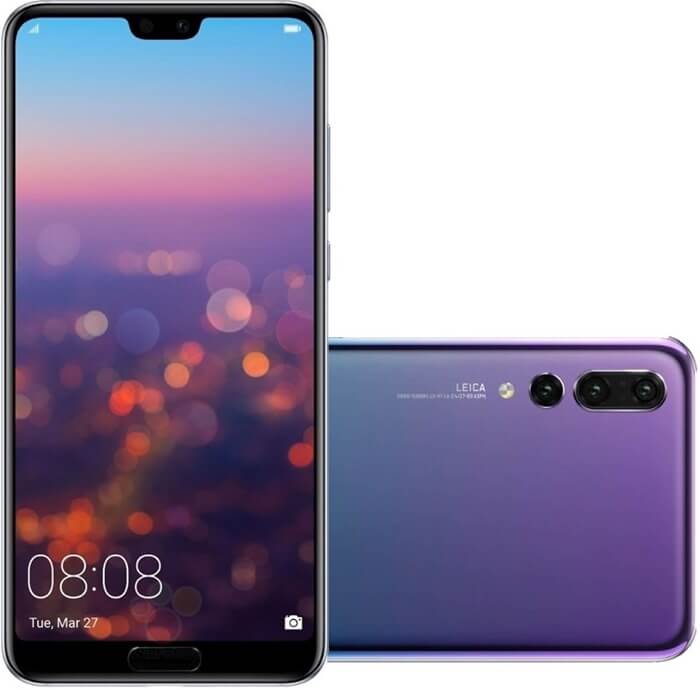 The phone with the best camera of 2018 - the Huawei P20 Pro - features a top-of-the-line design and significant internal component upgrades. Compared to the Huawei P20, the new flagship boasts a larger OLED screen - 6.1 inches with an aspect ratio of 18: 9, a larger 4000 mAh battery, 6 GB of RAM (the regular model has 4 GB) and IP67 waterproof rating.
The phone with the best camera of 2018 - the Huawei P20 Pro - features a top-of-the-line design and significant internal component upgrades. Compared to the Huawei P20, the new flagship boasts a larger OLED screen - 6.1 inches with an aspect ratio of 18: 9, a larger 4000 mAh battery, 6 GB of RAM (the regular model has 4 GB) and IP67 waterproof rating.
However, the most important difference is the unique triple camera, created in collaboration with the German company Leica. This is the best smartphone camera in 2018 at the moment.

The question arises: why does a smartphone need three cameras at once? Previously, Huawei equipped its gadgets with cameras with color and black-and-white sensors, which worked in tandem to get a photo with improved depth and sharpness. And with the addition of a telephoto lens, you can capture subjects you can't get close to. It allows you to increase the scale of the image without losing its quality.
The Huawei P20 Pro has a fantastic 40MP color lens and works in conjunction with a 20MP monochrome sensor.
Above the RGB lens is an 8MP sensor. It has 3x optical zoom and 5x software zoom.
Sample photos on Huawei P20 Pro
The camera also features software enhancements, including six-axis AIS image stabilization, which allows you to get great shots in low light conditions without the need for a tripod. And the intelligent assistant Master AI will tell you how best to compose the frame when shooting landscapes and group portraits.
On the front of the phone, there is a 24MP f / 2.0 sensor that will show your face in every detail in a selfie.
Pros:
- The glass back shimmers beautifully, and thanks to the rounded edges, the gadget fits comfortably in the hand.
- Powerful camera.
- Top Huawei Kirin 970 processor with NPU module for neural network computing.
- There is NFC.
- There is Huawei Super Charge fast charging technology.
- A very fast touchscreen fingerprint sensor built into the home button below the screen.
Minuses:
- No headphone jack.
- Thick bottom bezel.
- No memory card support. We'll have to be content with the built-in memory of 128 GB.
The P20 Pro places so much emphasis on camera enhancements that other elements of the phone seem comparatively lacking in terms of upgrades. However, this is the most beautiful and powerful phone from Huawei. It, as well as the P20, will appear in Russian stores in April.

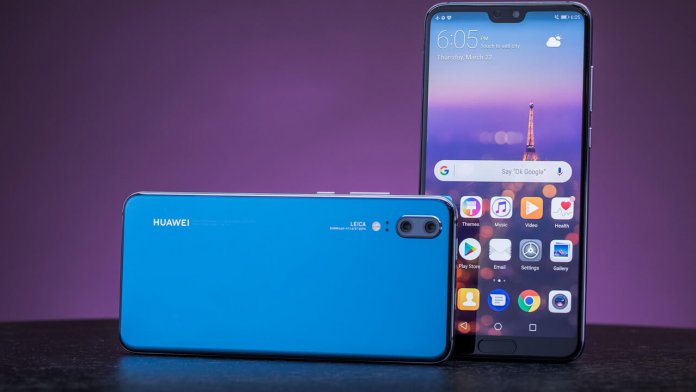

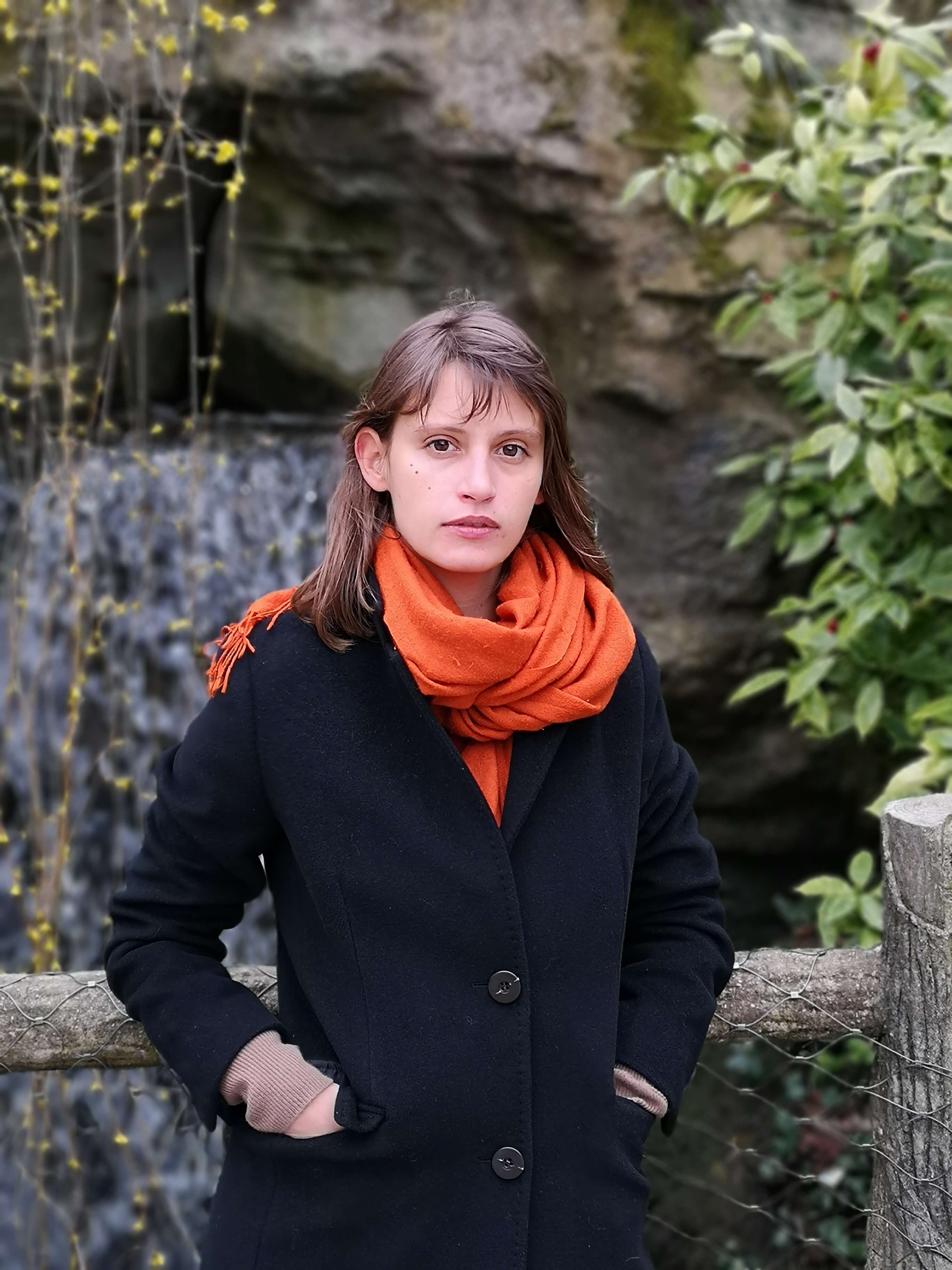

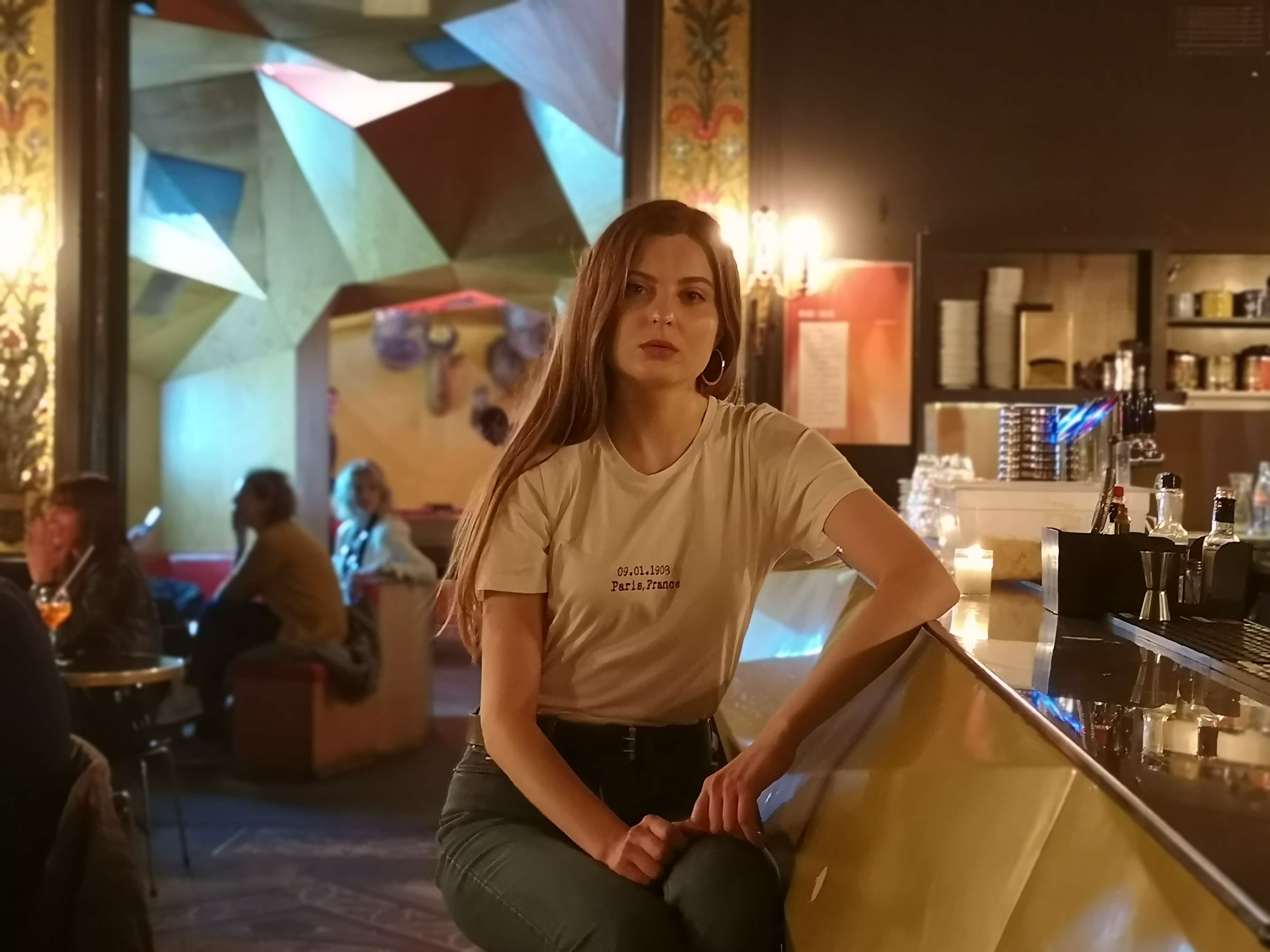
you tried to shoot lg v 30+ best shots and I have not seen a photo, but the kokieto Chinese are not at the top in one word shnyaga